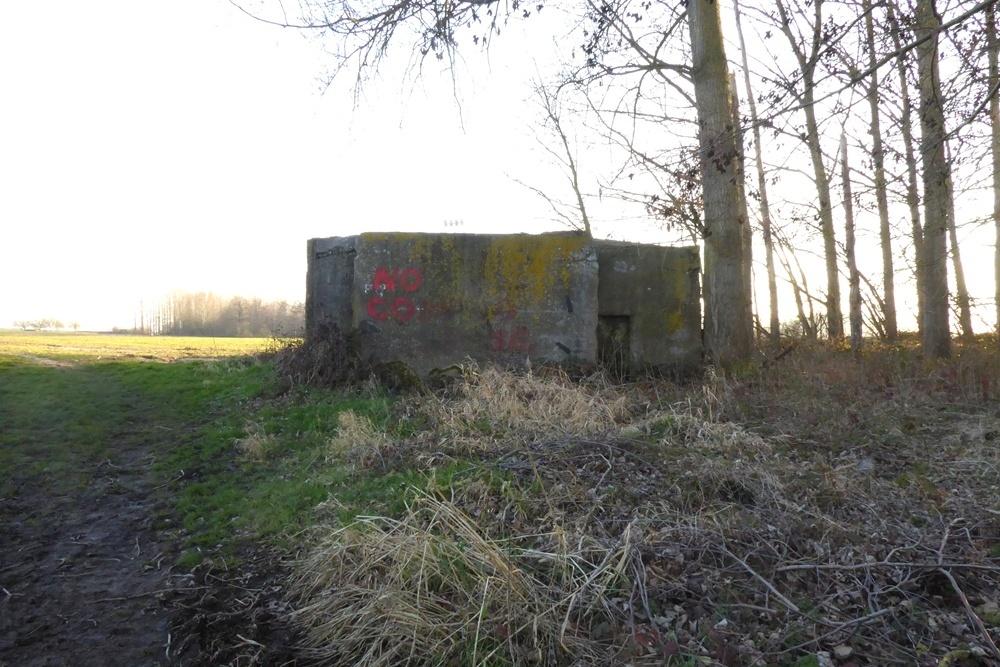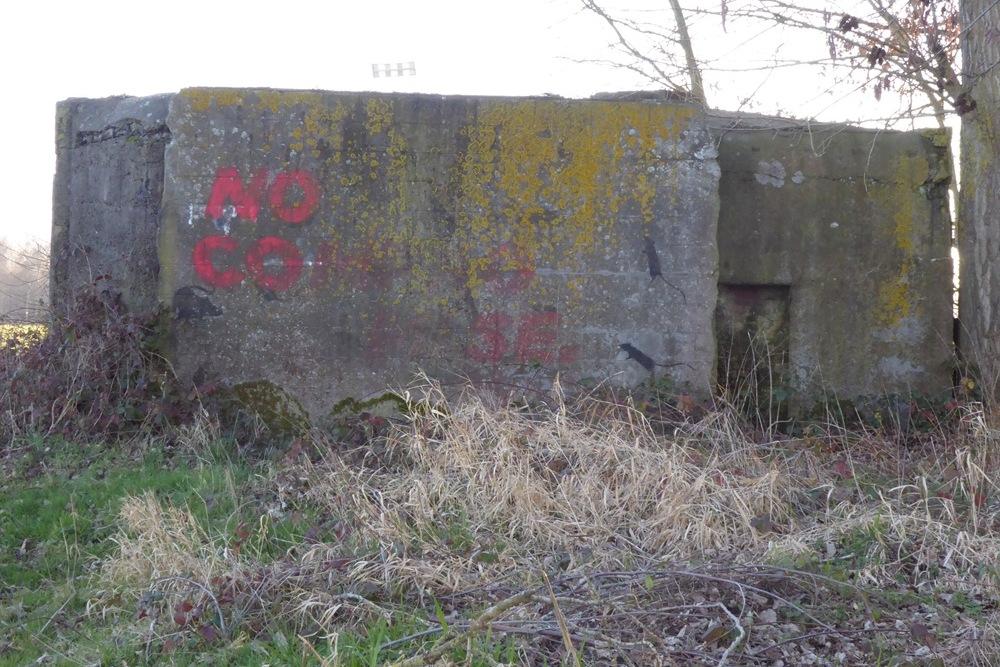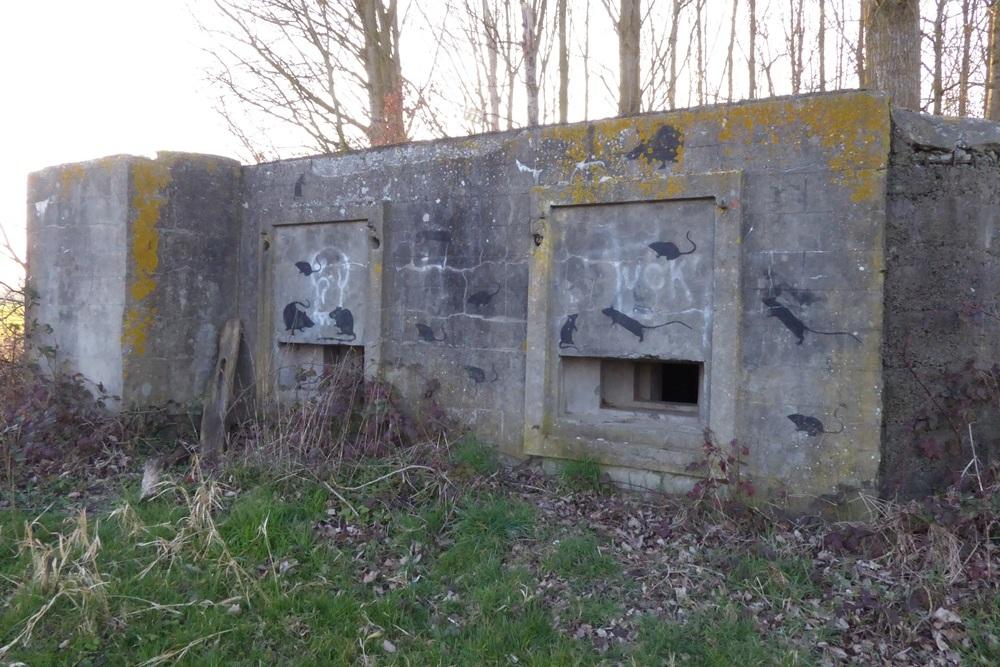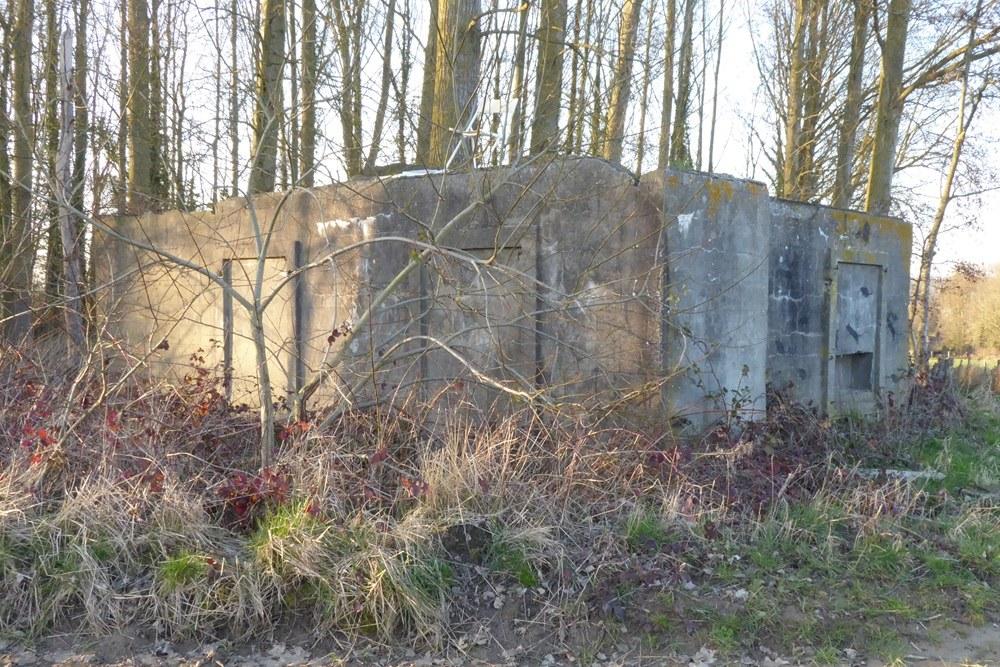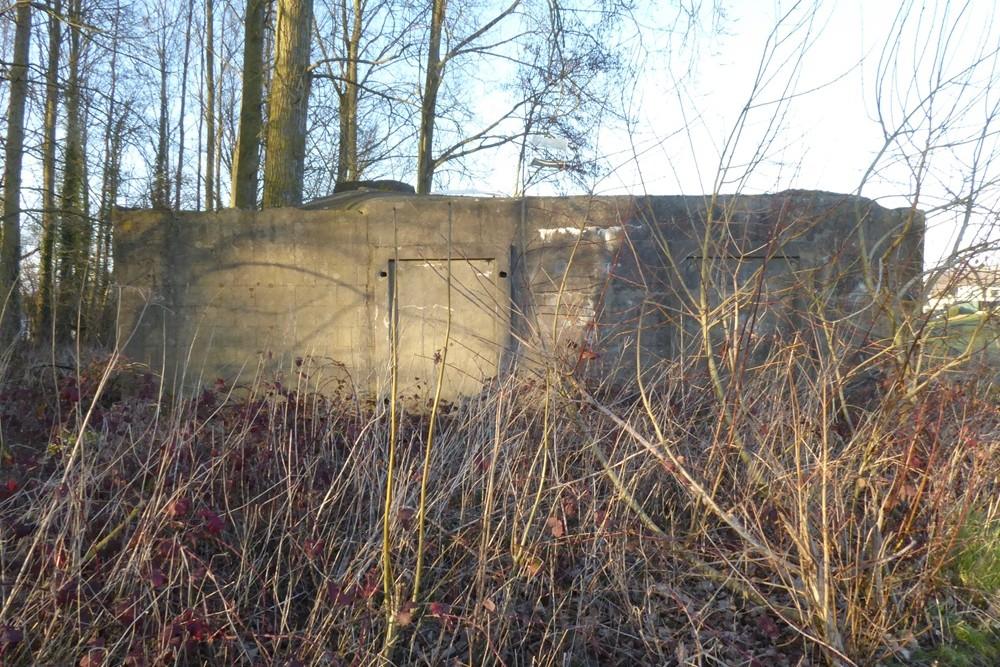Bunker Belt Bruggenhoofd Gent - Rear Line Bunker B36
Belgian bunker, part of the Ghent Bridgehead. This defensive position was constructed between 1934 and 1938, eight kilometres south of Ghent. Its construction was part of the fortification policy that Belgium pursued after the First World War.
The actual bridgehead consisted of two resistance nests – Betsberg and Muntekouter – and three strong points – Semmerzake, Eke and Astene.
The resistance nests and strong points were connected to each other by a curtain consisting of three defence lines.
On the territory of Landskouter there were three bunkers of the rear line behind Betsberg.
B36 was a rear line bunker between B35 and B37. It was placed at an angle with B37 in order to have a larger field of view and shooting range together. Due to the terrain situation they were quite far apart.
The corners of the bunker were finished with brick, the whole was cemented with a motif of ash stones. It had a fairly flat hipped roof with blue Boom roof tiles.
The bunker looked like a house on the edge of a forest, like there were several in these fields.
B36 consisted of two rooms connected at the back, a dome and an airlock. In addition to its standard arrangement of Maxim machine guns, it was also equipped for Hotchkiss and Colt machine guns.
The bunker is located on the edge of a small forest, accessible via the Evenraerdwegel, a field road that ends in the Schildershoek (side street of the Bakkerstraat).
Extensive information about this bunker belt can be found on the site Bunkergordel Bruggenhoofd Gent. It also contains photos, plans and technical data of the bunkers. A map shows the locations per municipality.
Do you have more information about this location? Inform us!
Source
- Text: TracesOfWar
- Photos: Marie-Christine Vinck
Nearby
Museum
Point of interest
- Halve Maanroute – information board 4, Battle of Gijzenzele - Gijzenzele
- Peace Tree Gijzenzele - Gijzenzele
- Halve Maanroute – information board 6, Battle of Gijzenzele - Gijzenzele
Monument
- War Memorial Landskouter - Landskouter (Oosterzele)
- War Memorial Moortsele - Moortsele (Oosterzele)
- War Memorial Gijzenzele - Gijzenzele (Oosterzele)
Cemetery
- Belgian Graves Veterans Landskouter - Landskouter (Oosterzele)
- Belgian Graves Veterans Moortsele - Moortsele (Oosterzele)
- Belgian War Grave Moortsele - Moortsele (Oosterzele)
Remembrance Stone
- Stumbling Stone Jacques Eggermontstraat 59 - Gent
- Stumbling Stone Kortrijksesteenweg 890 - Gent
- Stumbling Stone Monterreystraat 63 - Gent
